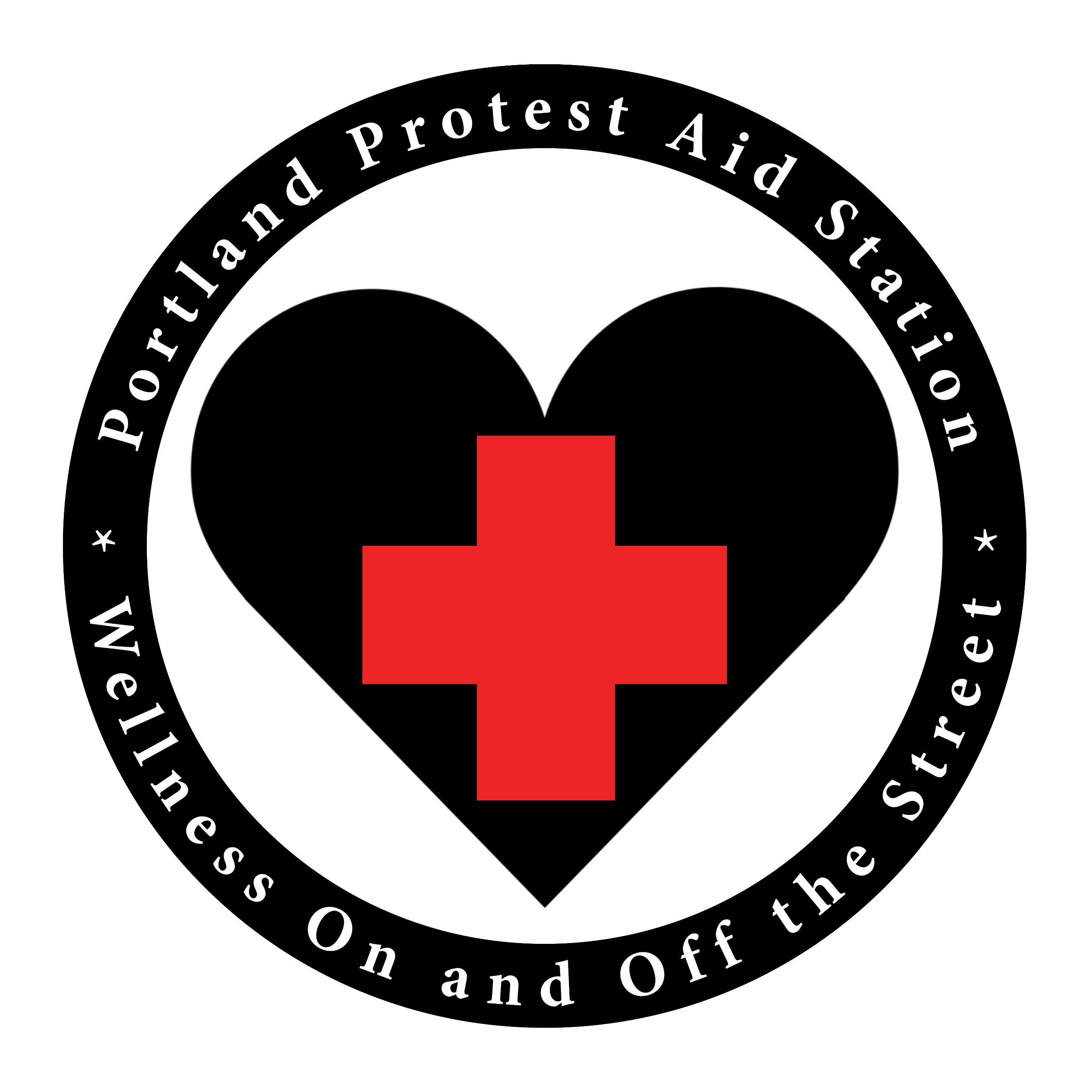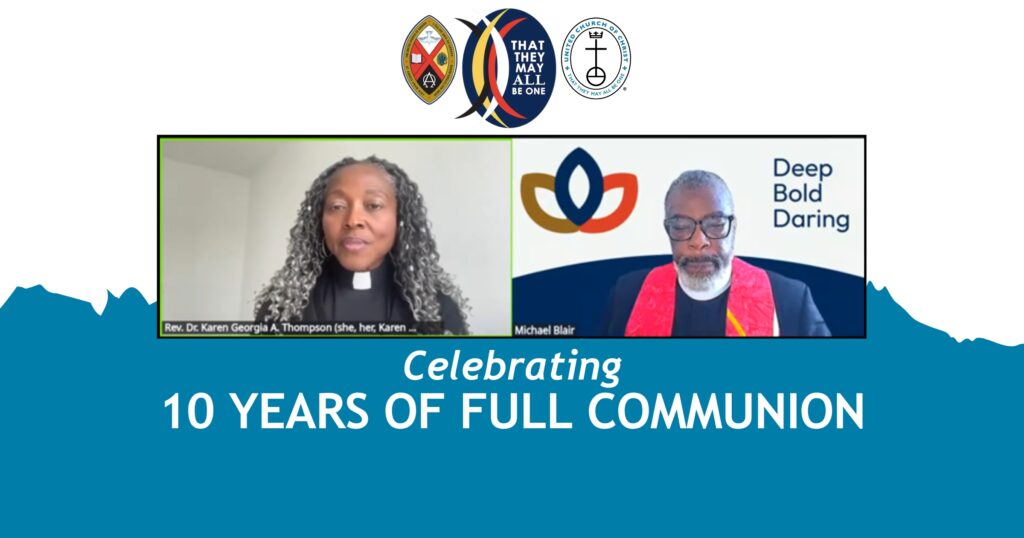Church is known as safe space near protests’ epicenter in Portland, Ore.
Situated just blocks from where intense nightly demonstrations against police brutality first broke out in late May, the leaders of First Congregational United Church of Christ, Portland, Ore., thought hard – then opened their doors to medics on June 12 as protests continued.
Since then, through word of mouth and social media networking, the church has become known to the protest community as a place to get water, snacks, use the bathroom, lay down their physical and mental burdens, and find a listening ear.
 It’s one of a variety of ways in which UCC people are able to be present in demonstrations that erupted in Portland after the May 25 killing of George Floyd in Minneapolis. (Click here to read a related story.)
It’s one of a variety of ways in which UCC people are able to be present in demonstrations that erupted in Portland after the May 25 killing of George Floyd in Minneapolis. (Click here to read a related story.)
The decision to open
Cara Rothe, First Congregational’s business manager, and the Rev. Janet Parker, its interim senior minister, were approached in June by a young activist seeking a base where street medics could stock supplies and possibly bring in demonstrators for aid. The volunteer medics are regularly present at protests around town and have aided demonstrators hit by police batons, tear gas, pepper spray, rubber bullets and other projectiles.
The congregation’s leadership council called an emergency meeting to discuss the request. After carefully considering COVID-19 precautions, what to do if police showed up, and more, church leaders agreed. They opened their fellowship hall, kitchen and small chapel to the medics on Fridays and Saturdays, 9 p.m. to midnight. It was called the “Black Lives Matter Aid Station,” then “Portland Protest Aid Station.”
Within days, “we went from five or six people using the bathroom at night to 100,” said Rothe, who coordinated the effort with First Congregational member Carter Latendresse, who leads its Peacemaking Core Ministry.
Soon, other volunteers began to show up at the church, just a short walk from the federal building, courthouse and justice center where downtown protests have been focused.
Hours expand to meet need
“Within two weeks, we had 10 or 11 medical doctors who volunteered to be the physician on duty one night a week,” Rothe said. “Within another week, six mental health professionals volunteered. Then we had pet therapy people who wanted to bring dogs. Then a music therapist. Protestors were coming in and donating things. One took off all of his stuff and said, ‘Can I help? Can I go clean the bathrooms for you?’ We became this place where we were building connection with one another.”
The station expanded hours to Thursday through Sunday, 10 p.m. to 1 a.m. It wasn’t officially a church ministry, but two First Congregational people were always there.
“That has been a very meaningful experience, for us to interact with the protestors in that way,” Rothe said. Most arrive wearing gas masks, helmets, flak jackets and other protection. “They would take off all their gear and say, “Oh, my gosh, thank you so much for being here. Can I just sit down?’”
Conversation with the visitors is common, but not with any overt church references or Christian content, Parker and Rothe said. “It is just an opportunity to talk to people about spirituality and mental health, how they are feeling about things, about racism,” Rothe said. “It is quite the blessing for us to be able to talk to people we never would have otherwise.”
Parker said the visitors’ calm respect for the space contrasts with the sometimes-chaotic scene outside – but also connects with the support protestors show for each other on the street. “They’re so polite and mannerly when they’re there, cautious and considerate of the place and of us – not entitled-sounding at all,” Parker said. “The medics themselves are being inspired by seeing the protestors taking care of one another” with food, water and even a security line of bikes that protects marchers.
A fatal shooting – and a shift
A pivotal moment for the First Congregational station came on Aug. 29, when a dozen volunteer medics and legal observers took refuge at the church. They had been near the fatal shooting of Aaron Danielson, about a half-mile away.
(Danielson was a supporter of Patriot Prayer, often described as a right-wing extremist group, which was counter-protesting that evening. Later, Danielson’s alleged killer, Michael Reinoehl, a self-described anti-fascist, was himself killed in a Sept. 4 encounter with law-enforcement officials with a warrant for his arrest near Olympia, Wash.)
“They were in trauma mode,” Rothe said, remembering the arrival of the volunteers. “One collapsed on the floor. Some asked to use the chapel.” Not only had they been close to the protests’ first fatality, but after weeks of duty, some spoke of anxiety, sleeplessness and even feelings of being unappreciated.
That was that start of a shift in thinking about the aid station, Rothe said. “We started having conversations about mental health,” she said. “Not a lot were asking for it. Now, more people are looking more haggard. There are more tears. There’s a lot of post-traumatic stress syndrome that’s happening right now – a lot of hyper vigilance among the protesters and the medics. We’re thinking about a secular candlelight vigil, a moment in our chapel, to help people unpack these unseen wounds they’ve experienced all these months.”
What’s underneath the armor
The vulnerability and humanity of people involved in the protests, the people supporting them, and even some police – who have so far not interfered with the First Congregational station – are what don’t show up in TV news coverage of the demonstrations, Rothe said. She told a story from the station’s early days as an example.
“This guy comes to the door and he’s got a flak jacket on, an anarchist t-shirt, a big respirator and the helmet that it goes on, a shield,” she said. “He comes in, he’s all in black, I’m a little bit like, ‘Whoa.’ And he says, ‘Can I just take this off?’ It took him several minutes. After he got everything off, he’s like this 15-year-old kid. His face turned red. He said, ‘Ma’am, can I use the bathroom?’
“Underneath the armor, he’s just this timid kid who is out there just doing his thing. It’s a reminder to all of us that underneath all of this anger and bravado are people that are often very young and getting traumatized.”
Being a space to receive that trauma has so far been First Congregational’s unique contribution during a summer of unrest, supplementing the work of the medics, Portland Interfaith Clergy Resistance street chaplains, legal observers and other volunteers. “We were the only church that took up the invitation to open,” Parker said. “I’m really proud of our church.”
Related News
A Moment of Silence
The weekend news was alarming. Two students shot and killed with 9 injured at Brown University...
Read MoreIn hope-filled worship service, UCC and United Church of Canada celebrate full communion past and future
On Saturday, Dec. 13, many from the United Church of Christ (UCC) and the United Church of...
Read More‘A Gift of God to the World:’ Christmas greetings from the General Minister and President
As Christmas quickly approaches, UCC General Minister and President/CEO the Rev. Karen Georgia...
Read More


